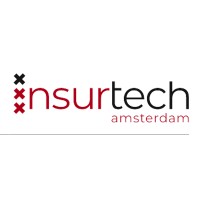Hello readers! Today, we'll be exploring the fascinating world of digital twins and its significant influence on the insurance industry. Although digital twins have long been used in sectors such as oil and gas, manufacturing, and healthcare, they are now making waves in the insurance field. In this blog post, we'll cover the fundamentals of digital twins, discuss why insurers should be intrigued by them, examine their impact on different industries, and observe how they are reshaping the insurance landscape.
What is Digital Twins?
Digital twins are virtual replicas of real-world objects, processes, or systems. They accurately mirror every detail and behavior in real-time. Insurers can use these digital counterparts to monitor, analyze, and predict the performance of physical objects, all without the need for physical presence.
So why should insurers be interested in digital twins? Well, the benefits are quite significant. Insurance companies deal with massive amounts of data every day, including customer information, policy details, and claims history. Digital twins provide an opportunity for insurers to extract valuable insights from this data like never before. They create a dynamic and real-time simulation that captures all the relevant information, behavior, and interactions to provide a comprehensive understanding of the original physical object or scenario.
Unveiling the Inner Workings of Digital Twins
Digital twins operate through a step-by-step process:
- Collecting Data: Relevant information is gathered from multiple sources associated with the physical object or system. This includes data on design, construction, materials, components, sensors, and previous performance.
- Creating Models: Using sophisticated modeling and simulation techniques, a virtual version of the object is built, including all relevant characteristics.
- Real-Time Monitoring: The digital twin utilizes sensors and IoT devices to closely track the physical counterpart in real-time. It constantly monitors crucial factors such as temperature, pressure, vibrations, and location.
- Data Fusion: The digital twin model incorporates real-time data from the physical object, resulting in an accurate representation of its behavior.
- Simulation and Analysis: The digital twin utilizes integrated data to simulate behavior and performance, allowing for the exploration of various scenarios and potential outcomes.
- Digital twins offer predictive insights by analyzing historical and real-time data. This capability proves invaluable in forecasting future actions of the physical object, particularly when it comes to maintenance predictions.
- Improved Efficiency and Performance: Digital twins enable remote management and optimization, resulting in increased efficiency and improved performance.
- Continuous Refinement: As new data is continuously integrated into the simulation, its accuracy improves over time. This leads to more precise predictions and optimizations.
- Scenario Testing: Digital twins are used to simulate various scenarios and assess the impact of changes or interventions.
- Communication and collaboration are key aspects of digital twins. They provide a shared platform for stakeholders to come together, collaborate, make informed decisions, and access real-time data and simulations.
Digital Twins Beyond Industry Boundaries
Digital twins have already created waves in various sectors:
- Healthcare: Enhance patient care by implementing personalized treatment plans and utilizing real-time monitoring of medical equipment.
- Aerospace: Provide assistance in maintaining aircraft, predict potential part malfunctions, and enhance overall flight safety.
- Construction: Aid in project management and issue anticipation.
- Logistics: Improve supply chain operations, accurately predict delivery times, and optimize route planning for efficient transportation.
The Vital Role of Digital Twins in Insurance
As insurance companies navigate the data-driven landscape of today, they are constantly seeking ways to harness information for smarter decision-making. However, the complexities and diverse patterns within data present their own set of challenges. That's where digital twins come in, offering a solution to overcome these hurdles.
Insurers can leverage digital twins to create virtual models of policyholders' assets, and events using real-time data. These models enable simulations of various scenarios, greatly improving the accuracy of risk assessment.
By embracing digital twins, insurers can:
- Insurers can utilize digital twins to evaluate the risk profiles of physical assets. This is achieved through continuous monitoring of real-time data from sensors and operational systems.
- Insurers can utilize digital twins to validate claims. This is achieved by comparing the condition of the physical asset with its corresponding virtual model, ensuring a precise assessment of damages.
- Digital twins in predictive maintenance enable insurers to effectively identify maintenance needs and potential issues with insured assets. This empowers them to take proactive measures in order to prevent costly damages or failures through timely maintenance.
- Insurers have the ability to personalize insurance policies through personalized underwriting by utilizing data from digital twins. This enables them to tailor coverage and pricing according to individual risk profiles.
- Fraud Detection: Insurers can leverage digital twins to access real-time data for analyzing and detecting fraudulent activities. This not only enhances fraud prevention measures but also safeguards against false claims.
- Loss Adjustment: Insurers can rely on digital twins to accurately estimate and measure losses. This technology helps assess the impact of claims and determine appropriate settlement amounts with efficiency.
- Risk Mitigation and Prevention: Insurers can effectively reduce the likelihood of claims by utilizing digital twin technology to simulate risk scenarios. This allows them to develop tailored risk prevention strategies and offer policyholders recommendations on safety measures to implement.
- Digital twins enable insurers to engage with customers effectively. By providing real-time insights about their assets, insurers can proactively manage risks and offer valuable services.
- Insurance companies have the ability to closely monitor the performance of insured assets through digital twins. These virtual replicas enable insurers to track important metrics, identify areas in need of improvement or optimization, and make necessary adjustments for enhanced efficiency.
- Product Development: Insurers can leverage digital twins to gather valuable data on asset performance and customer behavior. This data serves as a crucial resource to inform the creation of new insurance products and services.
Entering a New Era for Insurers
The insurance industry may not be commonly associated with cutting-edge technology, but digital twins are changing that perception. They are enabling insurers to discover new opportunities, enhance customer experiences, and optimize operations in ways that were once considered unlikely.
Picture an insurance company that can identify and reduce risks with exceptional precision, tailor policies to individual requirements, and handle claims swiftly. This is the extraordinary power of digital twins in action. In today's interconnected and data-driven world, embracing digital twins isn't just an option for insurers – it's a crucial step to remain competitive in the ever-changing landscape of the 21st century.
The digital twin revolution is making waves in the insurance industry. This transformative technology is reshaping the way things are done, and it's clear that the world of insurance will never be quite the same again. Cheers to this exciting advancement!













